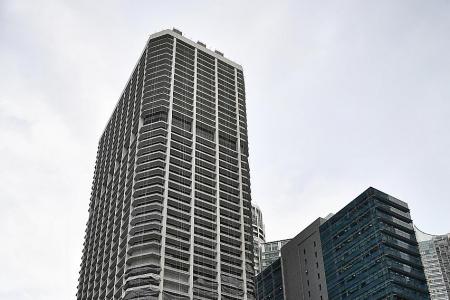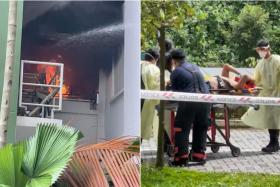Older buildings must install critical safety measures under Fire Code
Older buildings now require critical fire safety features after Fire Code changes
Older buildings as well as those whose occupants are at a higher risk in the event of a fire may soon be required by law to install critical fire safety features to keep up with the latest Fire Code.
So far, some 500 buildings have been identified as requiring these features.
This is based on the fact that they were built before the 1991/2002 Fire Code, have a higher occupancy load, as well as the profile of their occupants.
For example, International Plaza in Anson Road has not undergone additions and alterations works since it was constructed in 1976.
While the high-rise commercial and residential building is compliant with the 1974 Fire Code, it lacks exit staircases that lead to outdoor areas, which would be safer for evacuees during a fire emergency.
The new requirement is part of proposed key changes to the Fire Safety Act tabled by the Ministry of Home Affairs in Parliament yesterday.
NEW ENHANCEMENTS
A spokesman for the Singapore Civil Defence Force (SCDF) said the 1991 edition of the Fire Code had introduced a suite of enhancements to facilitate evacuation, fire-fighting and smoke control, such as the requirement to have exit staircases designed to facilitate evacuation of occupants.
The 2002 edition introduced additional fire safety requirements for healthcare institutions, such as the need to cater for safe areas of refuge on all floors, to facilitate evacuation of patients with mobility issues.
Of the 500 buildings identified, 460 were built based on the pre-1991 edition of the Fire Code, and 33 buildings built based on the pre-2002 edition.
They are mostly commercial, industrial and government buildings.
Building owners who do not comply with the requirement will face a maximum fine of $50,000 and/or a jail term of up to 12 months, as well as a $1,000 fine per continuing day after conviction, said the spokesman.
But to allow building owners to meet the requirements, the SCDF said it would exercise flexibility in the implementation on a case-by-case basis and may accept alternative solutions or grant time extensions to allow building owners to meet the requirements.
The Bill also proposes the creation of new offences to target contractors and suppliers of non-compliant fire safety products or materials in buildings.
Those who knowingly use or cause the use of such materials may be fined $100,000 and face a jail term of up to two years, while those who negligently use or cause the use of such materials may be fined $50,000 if no harm was caused.
Another proposed amendment is enhancement of the enforcement and investigative powers of the SCDF.
Currently, the SCDF can take action against errant building owners only when Fire Hazard Abatement Notices are not complied with.
Get The New Paper on your phone with the free TNP app. Download from the Apple App Store or Google Play Store now


